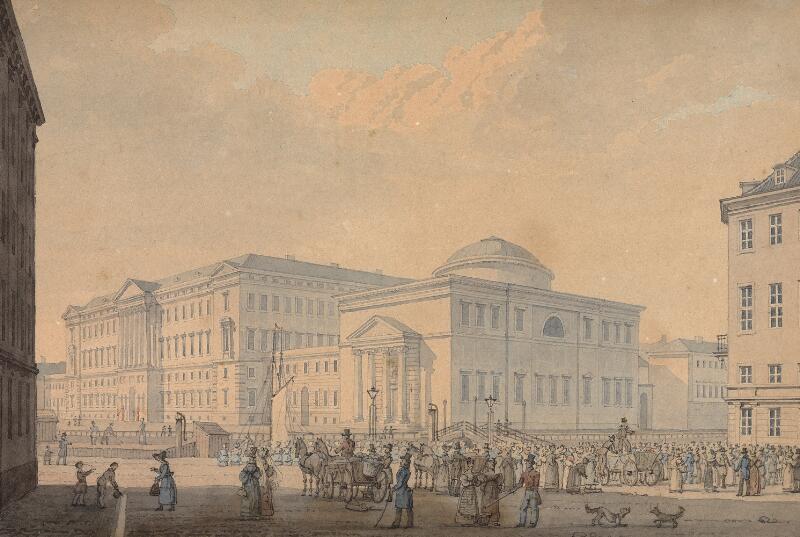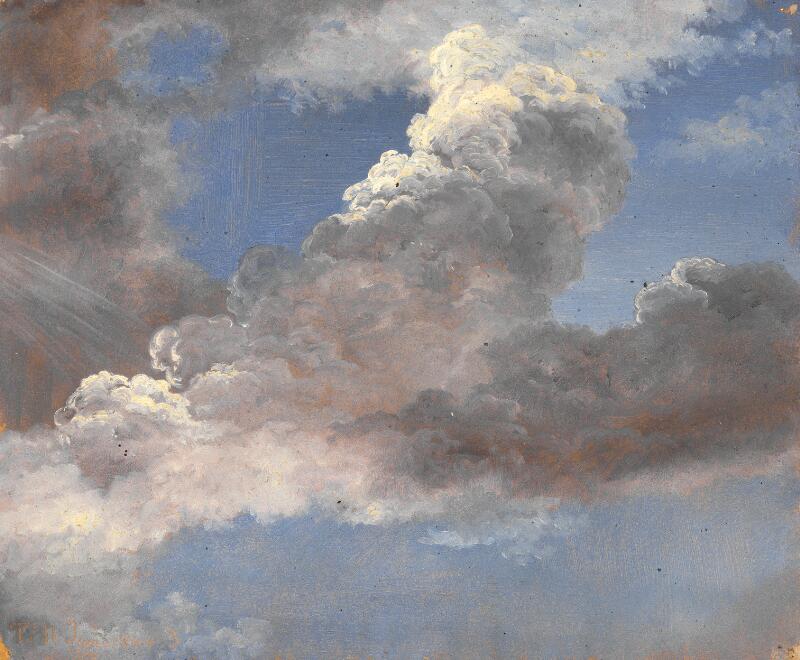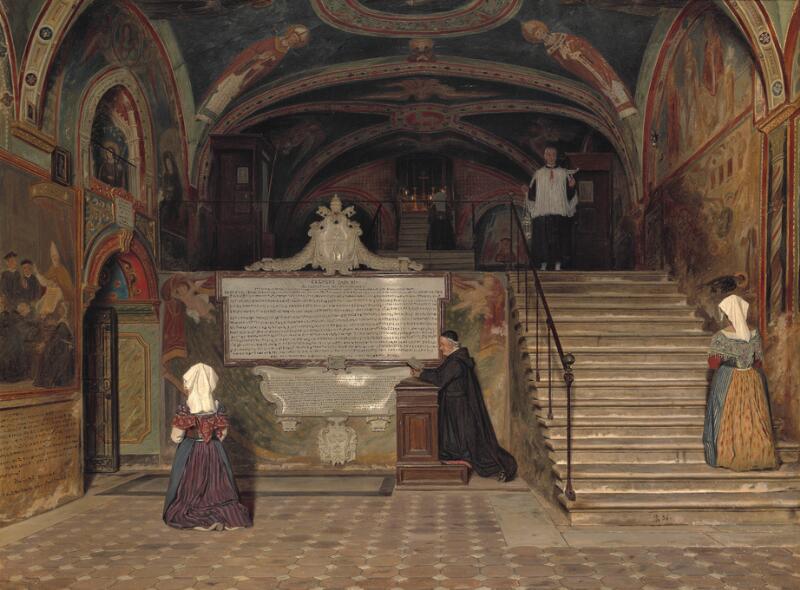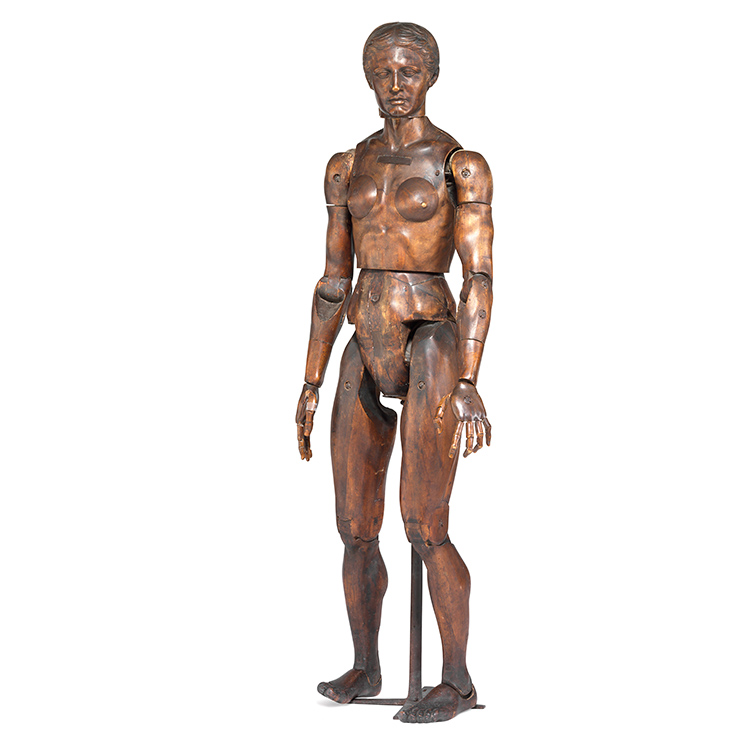The Danish Golden Age, Cloud Studies and a “Gliedermann”
The Danish Golden Age – the booming period in 19th century Danish art – continues to play a major role at our auctions. The same goes for this summer's Live Auction in Copenhagen on 8 June, where we can present paintings by Christen Købke, Christoffer Wilhelm Eckersberg and Martinus Rørbye as well as a so-called "Gliedermann" mannequin given as a gift by Bertel Thorvaldsen.
The period from 1801-1864 is characterized by a flourishing art scene in Denmark despite the country's major crises in the form of defeats in contemporary wars and ensuing economic and territorial losses. The nation’s spirit was in need of a revival, which was done through music, literature and not least the art of painting.
From a Kitchen in Copenhagen
Christoffer Wilhelm Eckersberg and his students at the Danish Royal Academy of Fine Arts are central figures in the story of the Danish Golden Age. This includes Christen Købke, who is considered one of the most prominent artists of the period. This time his contribution comes as a declaration of love to his family home in Copenhagen. In the work "Steps Leading Down to a kitchen" we get a look at the artist’s more intimate world with a view through a kitchen door near Dosseringen in Copenhagen. The painting is part of a series that all depict the home, which to the great sorrow of the family had to be sold after the father died in 1843, and the mother therefore a few years later had to sell the house. In this way, Købke's paintings from different locations in the house also became a final tribute to the home.
|
We move further out into the streets of Copenhagen with no less than 15 drawings by Heinrich Gustav Ferdinand Holm – also known as “Poor Holm” because of a life lived in destitution. Despite these challenges, he still managed to become known for his depictions of life in the Danish capital. Here it is not the intimate and private sphere that is depicted, but rather the national and historical we see portrayed with a focus on famous buildings from places such as the Palace Square at Amalienborg, the Langelinie quay and Christiansborg Palace. It is all done with great accuracy and a richness of detail, which were also hallmarks of the art from the period. |
|
|
A Fall from Grace and Scenes from the South
The focus on detail and accuracy was also embedded in Eckersberg's work, both as a teacher for an entire generation of Danish painters and in his own work within the many different genres of the day. In his series of paintings on “En falden piges historie” (The Tale of a Fallen Woman), we have reached part three of four with a work that shows the title character sitting in a dilapidated loft and in the process of putting on make-up for a masked ball. Details in the image suggest that the girl is still in the middle of the fall rather than on her way to recapturing her lost honour. The series contains a clear message about the virtues of marriage and is at the same time an example of the contemporary interest in depicting the life and social norms of the bourgeoisie.
|
|
|
However, Eckersberg also looked beyond the borders of Denmark and went on longer study trips to southern Europe, where he found inspiration for the techniques he passed on to his students, including "plein air" painting. We see examples of this in a number of cloud studies by e.g. Peter Christian Skovgaard, Christen Købke and Fritz Petzholdt, which are all a natural extension of Eckersberg's own scientific interest in weather phenomena. Skovgaard's cloud study contains an exact date: "Tuesday 11 June 1844" and possibly also the time: [at] "3", which is engraved in the wet paint. It gives a fine impression of the function of the cloud study as a careful recording of the weather. By working quickly, Skovgaard was able to portray a snapshot of the sky and weather conditions on a given day at a given time. The work in the field could also take longer, which Martinus Rørbye's diary descriptions of the creation of a work from the monastery of St. Benedetto in Italy also shows us – with the various weather challenges logged along the way. |
|
|
|
|
The Gift of a GliedermannIt was not just inspiration and motifs that the Danish artists brought home from Southern Europe. At the more curious end of the auction's lots from the Danish Golden Age, we find a gift given by the famous sculptor Bertel Thorvaldsen to the Danish portrait painter Niels Peter Holbech during the latter's visit to Rome. The unique Gliedermann mannequin was used as a model to paint after, but the man-size figure also caused great delight as a toy for the artist's daughter back home in Denmark. The later baroness and manufacturer Ursula Dahlerup mentions the mannequin in her autobiography: |
|
|
"Dad had a big Gliedermann, which he had brought home from Italy – I called him ‘Klittermand’. It was life-size and all the joints were movable. We dressed ‘Klittermand’ with father's clothes, high-hat and silk handkerchief (…) he was the father in our games, while my own father was my little Child and I 'a little kind and loving mother'."
Ursula Dahlerup
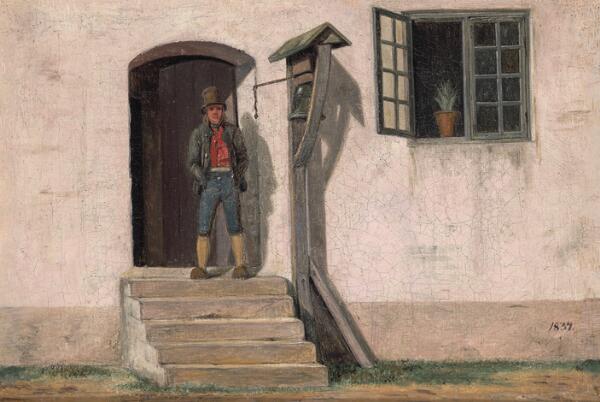
For further information, please contact:
|
|
Julie Arendse VossJulie Arendse VossHead of department / 19th Century & Old Master Paintings / København |
|
|
Birte StokholmBirte StokholmSpecialist / 19th Century & Old Master Paintings / København |
|
|
Søren Kjerk HolmstrupSøren Kjerk HolmstrupSpecialist / 19th Century & Old Master Paintings / København |

